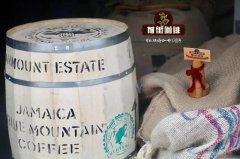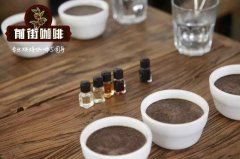Jamaica Coffee not only Blue Mountain how to distinguish Jamaican Coffee varieties

Professional coffee knowledge exchange more coffee bean information please follow the coffee workshop (Wechat official account cafe_style)
There are three varieties of Jamaican coffee: Jamaican Blue Mountain Coffee (Jamaica Blue Mountain Coffee), Alpine Coffee (Jamaica High Mountain Supreme Coffee Beans) and Jamaican Coffee (Jamaica Prime Coffee Beans). Among them, Blue Mountain Coffee and Alpine Coffee are each divided into four grades. From top to bottom in terms of quality, NO.1, NO.2, NO.3 and PB,PB are round beans. According to CIB standards, only coffee grown above 666m above sea level is called Jamaican Blue Mountain Coffee, while coffee grown in Jamaica's Blue Mountain area below 666m is called Alpine Coffee, and coffee grown outside the Blue Mountains is called Jamaican Coffee. It turns out that people in the coffee industry in China generally have a wrong understanding that only coffee grown in the Blue Mountains above 1800 meters above sea level can be called Blue Mountain Coffee. In fact, there is only one manor on the top of the Blue Mountains above 1800, that is, Amber, which is of Chinese descent. The owner of the manor is surnamed Lyn (Lin). Originally from Guangdong, China, the manor has a land area of only 30 hectares and its output is very small. Blue Mountain Coffee is mainly distributed in 5 mountainous areas such as John Crow,St.John's Peak,Mossman's Peak,High Peak,Blue Mountian Peak in the Blue Mountains.
Jamaica Blue Mountain Coffee is a Typica with low quantity and good quality, which belongs to the best variety in Arabica. The annual harvest time is from June to November. Generally, hand picking is used. After picking, it goes through the processes of washing, peeling, fermentation, dehydration, sun drying, shelling and baking in order to get a high quality ripe blue mountain coffee beans. In the process of raw bean processing, there are special personnel responsible for quality supervision in each step. For the very precious Blue Mountain Coffee, the packing and transportation mode adopted by the Jamaican government is also different. Unlike other coffees, Blue Mountain Coffee is not packed and transported in cloth bags at 60kg / bag, but in wooden barrels at the standard of 70kg / barrel. Jamaica is also the last country to still transport coffee in traditional wooden barrels. Jamaican Blue Mountain coffee beans must obtain a certificate of quality recognition issued by the Jamaican Coffee Industry Committee, which is the only body in Jamaica authorized to issue such a certificate. And each batch of export will have special quality supervision experts responsible for sampling, baking, grinding and brewing coffee, and finally make a judgment on whether to meet the standard.
The Jamaica Coffee Industry Authority stipulates that the defect rate of raw beans exported should not be higher than 3%, the moisture content should be maintained at about 13%, and the roasted bean yield of Blue Mountain Coffee is generally maintained at 83%. According to the raw bean-shaped size of Blue Mountain Coffee, the blue mountain coffee with more than 17 mesh is NO.1,16 and above is NO.2,15 and above is NO.3. Therefore, the NO.1 fresh raw beans of Jamaica Blue Mountain Coffee, which we usually see, are dark green, waxy, smooth, plump and round, like emeralds from Central America. And cooked beans, each batch of export, will pass the CIB quality control manager cup test after qualified can be released from customs, otherwise it will be returned or destroyed.
Related recommendations: Jamaica Blue Mountain hand flushing suggestion, temperature, grinding degree, powder-water ratio to introduce flavor and taste description
Important Notice :
前街咖啡 FrontStreet Coffee has moved to new addredd:
FrontStreet Coffee Address: 315,Donghua East Road,GuangZhou
Tel:020 38364473
- Prev

Is there any authentic Blue Mountain Coffee in China? Have you ever exported raw Jamaican coffee beans to Chinese mainland?
Professional coffee knowledge exchange more coffee bean information please follow the coffee workshop (Wechat official account cafe_style) the answer is: of course the export has been here! According to data from the World Trade Organization and Chinese Customs, the total global exports of Jamaican coffee in the past five years are as follows: 842 tons in 2011, 592 tons in 2012, 692 tons in 2013, 449 tons in 2014, 555 tons in 2015.
- Next

How to drink bourbon coffee is important to distinguish the flavor of these coffees
Professional coffee knowledge exchange More coffee bean information Please pay attention to coffee workshop (Weixin Official Accounts cafe_style) Some people think that black coffee is bitter coffee, coffee bitter, has been controversial. Some people say: how to call coffee without bitterness? Some people say that good coffee has a pleasant bitterness. Black coffee refers to coffee without modification, without added sugar and milk.
Related
- Beginners will see the "Coffee pull flower" guide!
- What is the difference between ice blog purified milk and ordinary milk coffee?
- Why is the Philippines the largest producer of crops in Liberia?
- For coffee extraction, should the fine powder be retained?
- How does extracted espresso fill pressed powder? How much strength does it take to press the powder?
- How to make jasmine cold extract coffee? Is the jasmine + latte good?
- Will this little toy really make the coffee taste better? How does Lily Drip affect coffee extraction?
- Will the action of slapping the filter cup also affect coffee extraction?
- What's the difference between powder-to-water ratio and powder-to-liquid ratio?
- What is the Ethiopian local species? What does it have to do with Heirloom native species?

